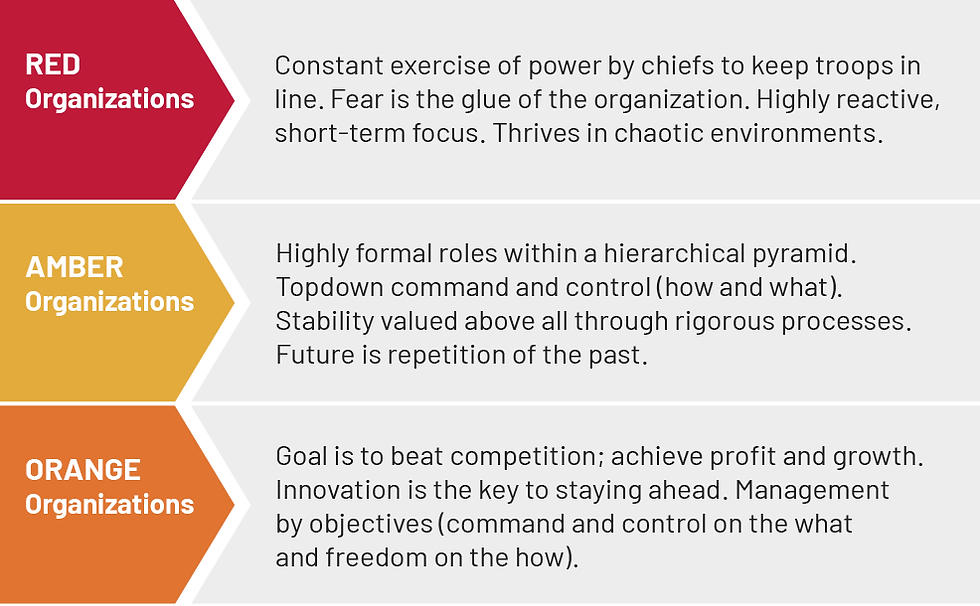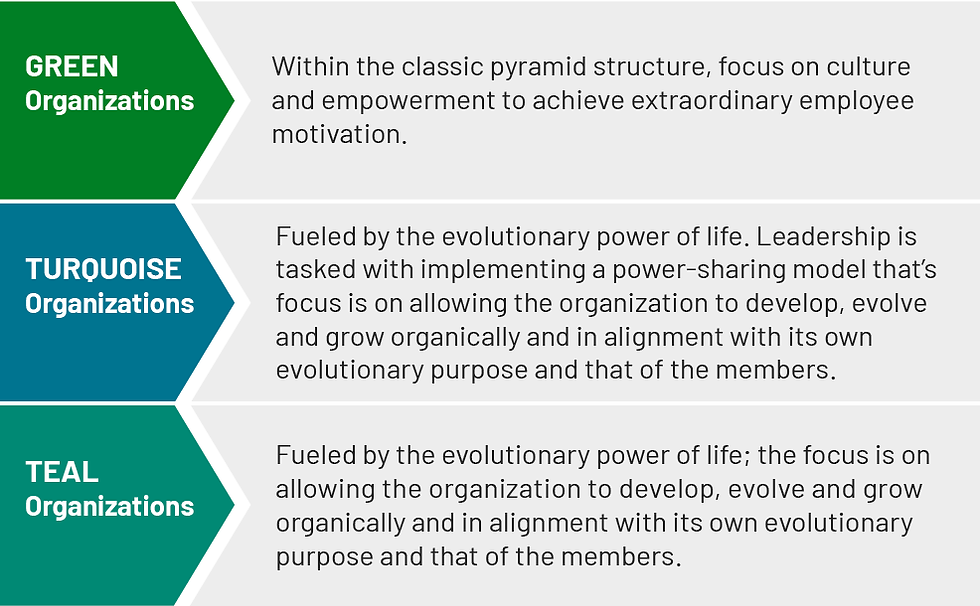Transform the Great Resignation into the Great Reimagined Workplace
- Dr. Robyn Short

- Oct 18, 2021
- 3 min read
Updated: Oct 16, 2022
By Workplace Peace Institute
Reimagining organizations by devising an innovative model that encourages productive, fulfilled, and engaged employees.

We are no longer living in the Industrial Age, and its approaches to organizational productivity no longer work. And yet, they persist in the workplace. --Dr. Robyn Short, CEO, Workplace Peace Institute
The U.S. Department of Labor's (DOL) September jobs report shows that the unemployment rate fell to 4.8 percent, and job openings are at a record high with increased wages as companies try to attract employees. But more than 25 million people have quit their jobs in the first seven months of 2021. American businesses are witnessing a shift in the collective mindset of the workforce and what it means to be an employee. Expectations are evolving, and yesterday's business models of leadership are no longer adequate for today's personnel.
Nearly 3.6 million Americans resigned in May alone. But it's not an issue that's specific to a certain industry, role, or even salary; it's a workplace issue. --Gallup, 2021
Times have changed, and the way employees think about the workplace and their place in it has changed. Recent reports of increased employee disengagement and record-high levels of voluntary turnover prove a challenge for companies to keep projects moving forward while searching for the right candidate to fill an open role (not to mention multiple positions). Gallup estimates that the cost of replacing an employee can range from one-half to two times the annual salary of that employee, costing between $25,000 and $100,000 to replace them. Organizations must identify and address their role in these changing conditions and prepare for the continuation of what economists call The Great Resignation and its relation to employees' workplace experience.
Segmenting organizational color paradigms into binary standpoints is a concept introduced by Workplace Peace Institute's perspective paper Reimagining Organizational Leadership. Organizational paradigms can be distinguished by color, with Red, Amber, and Orange organizations identified as "Newtonian" organizations and Turquoise and Teal as "Quantum" organizations. Green organizations possess some distinctions of the Quantum model with lingering characteristics of Newtonian.
Traditional leadership styles were borne out of the Newtonian concept that force must be applied to achieve motion; thus, the amount of pressure applied is directly proportional to the amount of movement gained. Newtonian organizations are characterized as highly hierarchical, with power limited to the highest levels of the organization. Red, Amber, and Orange organizations fall within the Newtonian model, which can be considered the foundational cause of The Great Resignation. Business structure systems of coercion and dominance are outdated and result in actively disengaged employees. With increased adversity and hardship occurring globally, employees are visibly rejecting the coercive, power-hoarding organizational model.

A more effective leadership model is that which incorporates the doctrines of quantum theory. A workplace environment based on the quantum theory model is relationship-centered and created through ongoing connections by the continual weaving and merging of energy and change. Whereas Green organizational paradigms exhibit aspects of a Quantum business model while retaining features of a Newtonian one, all elements of Turquoise and Teal organizations embody the principles of Quantum-style leadership. Quantum organizations recognize that all business activity is interconnected, interrelated, and powered by relationships.

Reimagine The Great Resignation
Humans have a profound need for human connection, crystallized by the COVID-19 pandemic. Employees must thrive during periods of extraordinary workplace disruption, change, and social isolation to limit The Great Resignation from taking place within an organization. Companies continue to struggle to adapt, especially when much work continues to be conducted remotely. Workplace Peace Institute's associated study The Impact of Covid-19 on Employee Engagement shows 50 percent of remote employees reported an increased commitment to the success of their organizations when there is a profound sense of connection.
One thing is clear: the labor force is no longer accepting business as usual. They are not simply looking for a higher wage as the DOL's September jobs report exposed; they are looking and expecting an improved workplace life. Employment is no longer just about the paycheck. Employees want a sense of purpose and connection with their work that is in alignment with their values. To achieve this expectation, organizations must uncover the barriers to meaningful engagement within their organizational structures, both remotely and in person. Businesses that focus on growth attributable to the Newtonian corporate leadership model of coercion rather than the Quantum theory paradigm of relationships will not survive.
With Workplace Peace Institute, visionary leaders can learn to accomplish a bold approach for tomorrow's success with an Employee Engagement Audit and apply personalized data-informed engagement strategies to increase productivity and bottom-line profits. Begin with a complimentary consultation and partner with Workplace Peace Institute to reimagine engaged employees in your organization's workplace.
Workplace Peace Institute is an organizational systems design and research firm that brings a holistic and multidisciplinary approach to organizational development. We support small to mid-sized businesses in optimizing employee engagement, maximizing organizational productivity, and improving profitability by infusing human security and dignity as foundational business model attributes.


